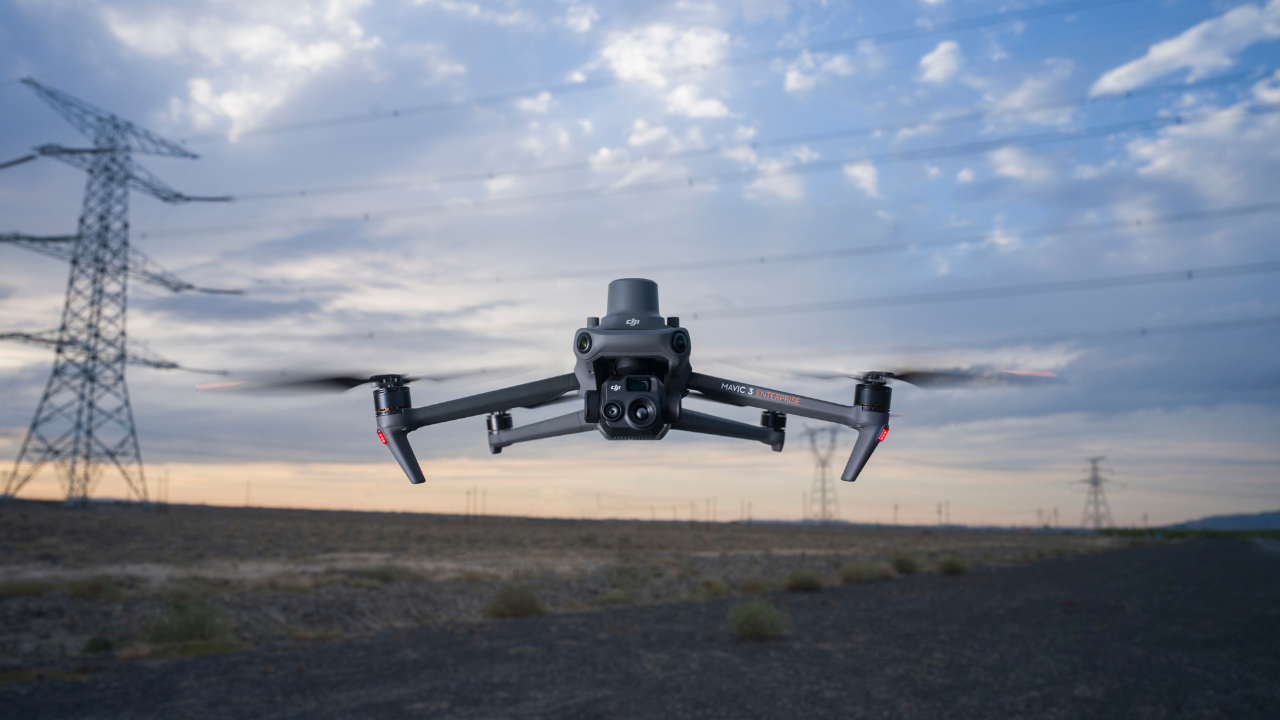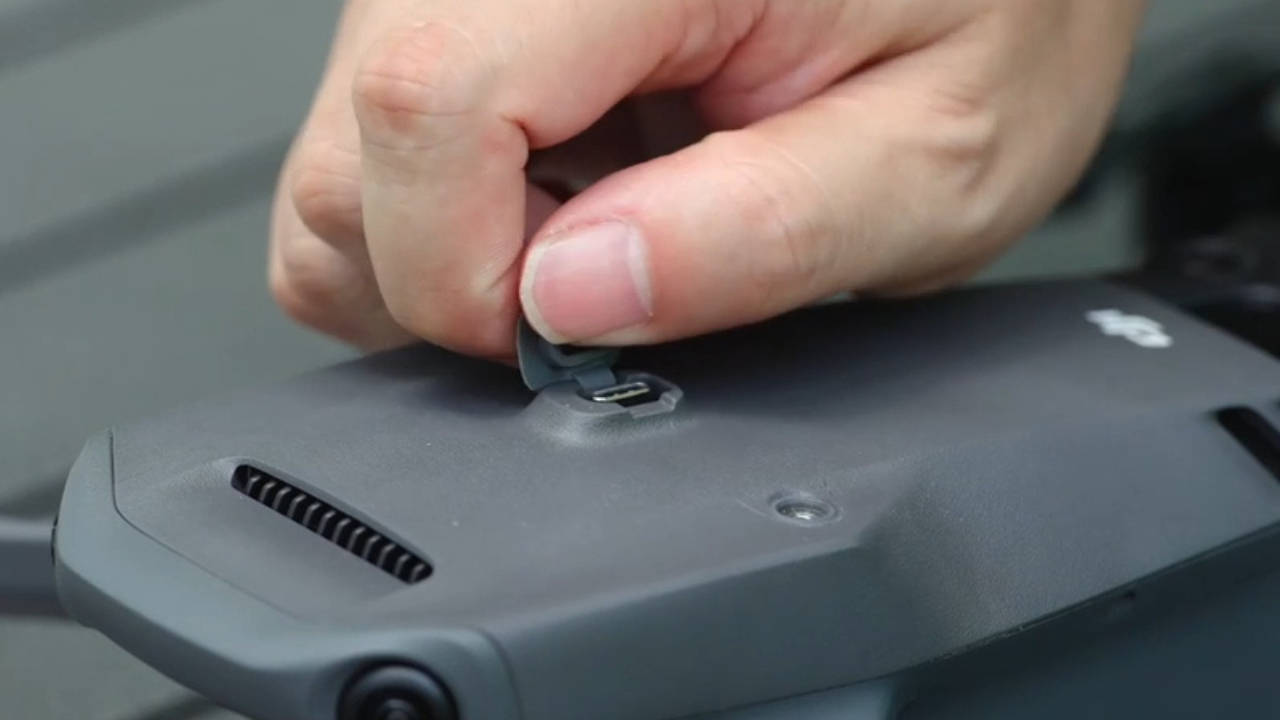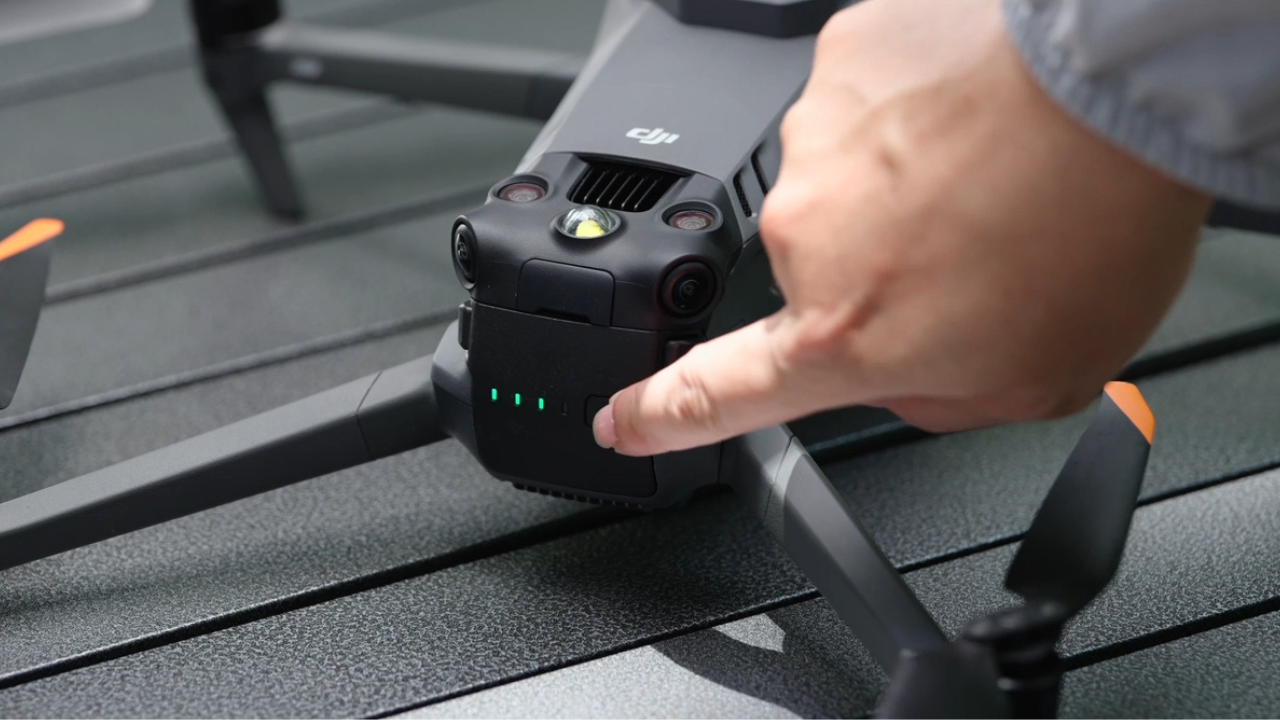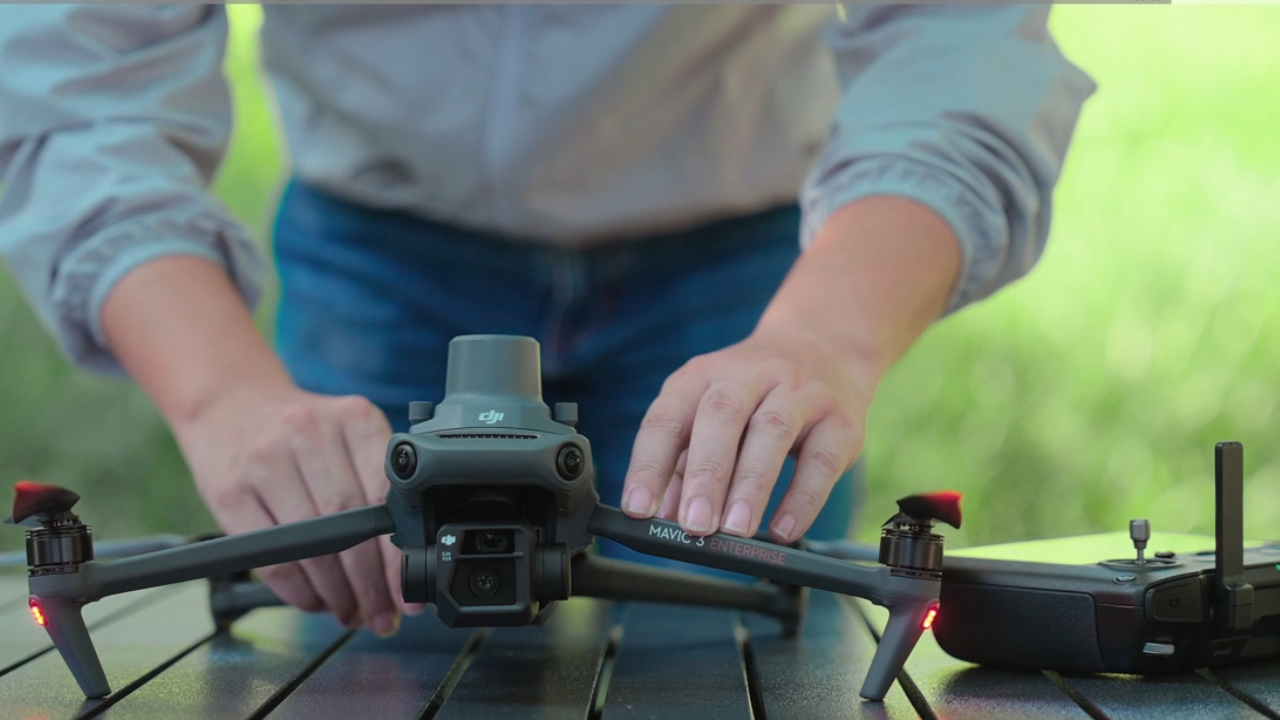
- A guide to the RTK Module for the DJI Mavic 3 Enterprise Series;
- The Module is a key accessory for the Mavic 3E and Mavic 3T, enabling more accurate drone data;
- For high-precision RGB surveying data, it is recommended to use the RTK Module with the Mavic 3E;
- When used with the Mavic 3T, the RTK Module enables improved geo referencing accuracy on inspection surveys and thermal mapping;
- The Mavic 3 Enterprise RTK Module is lighter and smaller than its equivalent for the Mavic 2 Enterprise Advanced;
- Read a step-by-step guide on how to install and activate the RTK Module, and how to use it with custom network RTK and the DJI D-RTK 2 Mobile Station.
The RTK Module is a key accessory for the DJI Mavic 3 Enterprise Series, enabling more accurate drone data.

Because it doesn't come in the box as standard, you'll need to make a conscious decision to purchase it.
With this in mind, this blog will explore the benefits of using the Module with the Mavic 3 Enterprise Series, and focus on some of the key workflows for connecting it to a custom network RTK and the DJI D-RTK 2 Mobile Station.
Why Is The Mavic 3 Enterprise RTK Module Important?
The RTK Module enables precision data collection with RTK - especially important for surveying missions.
It is used in conjunction with TimeSync 2.0: A position syncronisation system which aligns the Mavic 3 Enterprise Series' camera flight controller, RTK Module and gimbal at the micro-second level.

This means you can obtain accurately georeferenced data, without having to use GCPs in the reconstruction. However it is recommended that checkpoints are still used as a form of Quality Assessment.
It also ensures each photo uses the most accurate metadata and fixes the positioning data to the optical centre of the lens, optimising the results from photogrammetric methods and letting the image achieve highly-accurate positioning data.
The Mavic 3 Enterprise will also save GNSS information in the photos so users can utilise third-party PPK software.

The RTK Module can be used to increase the accuracy of the drone itself when it returns to the Waypoint location to capture data: A capability which is available for both the Mavic 3E and T.
Use the RTK Module in conjunction with network RTK, custom network RTK or the DJI D-RTK 2 Mobile Station, which is DJI’s upgraded high-precision GNSS receiver that supports all major global satellite navigation systems, providing real-time differential corrections that generate precise positioning data for improved relative accuracy.
Does This Mean That The Mavic 3T Can Be Used For Surveying With The RTK Module?
Essentially, yes. But, for highly-accurate RGB surveying data, it is recommended to deploy the RTK Module with the Mavic 3E.
As we've already mentioned, the RTK Module can be used with the Mavic 3E and Mavic 3T - supporting TimeSync and improving geo referencing accuracy in both cases.

However, in the case of the Mavic 3T, this accuracy would be within the 10 to 20cm range, compared to the Mavic 3E's more precise centimetre-level accuracies.
This is because the Mavic 3E's camera is optimised for surveying missions, with its higher-class camera specs which include a larger 4/3 CMOS sensor, increased pixel size, a 0.7s shooting interval, and mechanical shutter which removes the jelly effect under high-speed movement.
To further ensure the accuracy of modelling, the Mavic 3E camera is calibrated with internal parameters when leaving the factory. These internal parameters are written in the XMP (Extensible Metadata Platform) information of each image.
Therefore, when high-precision, RGB surveying data is required, it is recommended that the RTK Module is used with the Mavic 3E.
However, when used with the Mavic 3T, the RTK Module will help improve the accuracy of data collected with the drone - making it highly valuable when you deploy the drone for inspection surveying and/or thermal mapping.

Is The Mavic 3 Enterprise RTK Module The Same As The RTK Module For The DJI Mavic 2 Enterprise Advanced?
No, it is not.
The RTK Module for the Mavic 3 Enterprise Series is brand new and is designed exclusively for the Mavic 3 Enterprise Series.

Likewise, the RTK Module for the Mavic 2 Enterprise Advanced can only be used with this specific aircraft.
The RTK Module for the Mavic 3 Enterprise Series is smaller and more lightweight than the one for the M2EA, as the spec table below shows.
| Mavic 3 Enterprise RTK Module | Mavic 2 Enterprise Advanced RTK Module | |
| Weight | 24±2 g | 150g |
| Dimensions | 50.2 x 40.2 x 66.2 mm | 69 x 69 x 59mm |
As an added advantage, the design of the Mavic 3 Enterprise's RTK Module optimises cooling and flight time.
Mavic 3 Enterprise RTK Module Workflows: Installation, Activation And Network Connection
So, once you've got the RTK Module, how do you go about using it?
The following information provides a step-by-step guide to installing and activating this key accessory, as well as connecting to either a custom network RTK or the DJI D-RTK 2 Mobile Station.
Installation And Activation
- Open the protective covers of the aircraft expansion ports. Please note that the RTK Module does not support hot-swapping.

- Install the RTK Module on top of the aircraft. Make sure the USB-C port of the RTK Module can be fully inserted into the aircraft expansion ports.

- Tighten the screws on both sides of the module base. Avoid blocking the RTK Module to ensure positioning accuracy.

- Power on the remote controller and the aircraft and make sure they are properly connected.


- Launch the DJI Pilot 2 app and complete activation of the RTK Module by following the prompts on the interface.
Before activating, make sure that the remote control is connected to the network normally.
Using Custom Network RTK
A custom network RTK enables you to stream positional corrections over the internet in real-time. An NTRIP log-in/subscription is required to do this. Examples of services include Premium Positioning and Trimble VRS.
- Before using the custom network RTK, ensure that the remote control is connected to the network normally. Then, go to the settings page - as shown by the red arrows in the picture below.

- Enable the 'RTK Positioning' function and 'Maintain Positioning Accuracy Mode'....

- ...and set the RTK Service Type to Custom Network RTK.

- Fill in the information for the NTRIP Host/Port/User/Password/Mountpoint. Then tap on Save to start connecting to the server.

- When the status bar shows 'RTK connected RTK data in use'...

...and the aircraft positioning is shown as 'FIX'...
...it means that the RTK function is ready and you can start your flight mission.
Using the D-RTK 2 Mobile Station
The DJI D-RTK 2 Station uses a radio link to provide real-time positioning data. It is recommended to set this base station up over a known point and in an open and unobstructed environment.
- To use the aircraft with the D-RTK 2 Mobile Station, the Mobile Station must first be set up. After the device is turned on, press and hold the Mode button.

- When the mode status indicator flashes once it enters the mode switch state.

- Short-press the Mode button to set the D-RTK 2 Mobile Station to Broadcast Mode (Operating Mode 5). The table below shows the various operating modes available and accompanying light blinking pattern.
Mode Name/Compatible Products Blinking Pattern Operating Mode 1 Mobile Base Station (T20/T16/MG-1P RTK / Phantom 4 RTK / P4 Multispectral Once Operating Mode 2 Stationary Base Station Twice Operating Mode 3 Handheld Mapping Device (T20/T16/MG-1P RTK/Phantom 4 RTK) Three times Operating Mode 4 Mobile Base Station (M210 RTK V2) Four times Operating Mode 5 Mobile Base Station (Broadcast Mode, M300 RTK / M30 Series / DJI Mavic 3 Enterprise Series) Five times
- On the RTK Settings page, enable 'RTK Positioning' and 'Maintain Positioning Accuracy Mode' and set the RTK Service Type to D-RTK 2 Mobile Station.

- Scroll down and tap to go to the Mobile Station Connections page...


...and select the corresponding D-RTK 2 Mobile Station to complete the connection.
- If the mobile station cannot be found perform troubleshooting by following the in-app prompts.


- Go to the RTK Settings interface and tap Advanced Settings to enter your password. As a tip, the default password is 123456.

- Tap on Adjust Coordinates...

...manually enter the current location information for the D-RTK2 Mobile Station...
...and then click 'Ok'. The system will save the current location information.
- When the status bar shows 'RTK connected RTK data in use'...

...and the aircraft positioning is shown as 'FIX'...
...you can start your flight mission.
How To Remove And Store The Mavic 3 Enterprise RTK Module
- Power off the aircraft and remote controller.

- Unscrew the fixing screws.

- Remove the RTK Module from the aircraft and firmly attach the protective covers of the aircraft expansion ports.

- Place the RTK Module in the aircraft carrying case.

The aircraft can be directly stored in the carrying case with the RTK Module installed.
If the device needs to be transported or stored for a long time, remove the RTK Module from the aircraft and store them in the carrying case separately.











